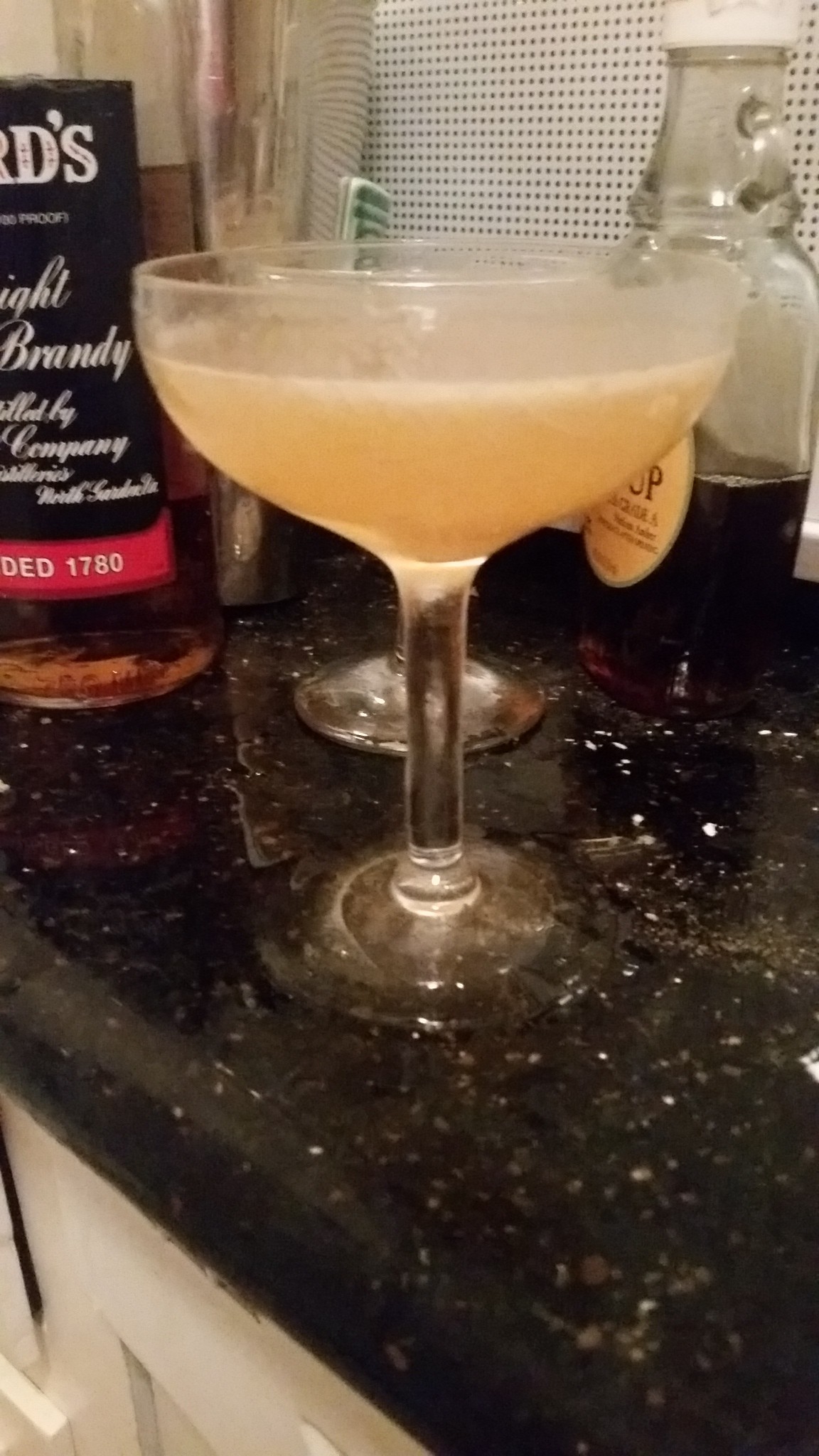Drink of the Week: The Applejack Rabbit
 So, if you’ve been wondering when I’d finally get around to finding a source for cocktails other than Harry Craddock’s 1930 “The Savoy Cocktail Book,” this is your week, more or less.
So, if you’ve been wondering when I’d finally get around to finding a source for cocktails other than Harry Craddock’s 1930 “The Savoy Cocktail Book,” this is your week, more or less.
Like Craddock’s book, “The Fine Art of Mixing Drinks” by David A. Embury is one of the ur-texts of today’s cocktailian scene. Still, it is a different animal than Craddock’s tome because it’s much more than a recipe book. Embury, you see, was not a bartender at all and, apart from this book, was not really a professional author either; he made his living as a tax lawyer. His book is essentially a lengthy and extremely opinionated exploration of the best ways to prepare and consume mixed beverages from the point of view of an enthusiastic bar patron and home booze hobbyist. Before the appearance of such latter day booze historian/philosophers as David Wondrich and Ted Haigh, there was pretty much this one single book, and — at least to my very limited knowledge — not much else if you really wanted a thoughtful look at what makes a good drink a good drink.
First published in 1948 and last updated in 1956, a lot of Embury’s book is obviously dated and/or downright inaccurate. Embury finds most tequila to be an abomination, while having some surprisingly kind words for Southern Comfort. He was absolutely certain that alcoholism and cirrhosis of the liver were unrelated illnesses. He also has a reputation for suggesting drinks that can be almost ascetic in their boozy severity.
For all that, the guy clearly knew his mixology, and this week’s drink is proof. It is actually the right amount of sweet, sour and boozy. As a non-bartender myself who is roughly the same age today as Embury was in ’48, respect must be paid, and one way to do it is with this concoction, a tasty delight that people of all cocktail denominations can love.
The Applejack Rabbit
1 1/2 ounces apple brandy
1/4 ounce fresh orange juice
1/4 ounce fresh lemon juice
1/4 ounce pure maple syrup
Combine all the ingredients in an ice-laden cocktail shaker and shake very vigorously. Then, strain into a chilled cocktail glass and consider the case for middle-aged never-bartenders writing in a quirky and opinionated fashion about mixed drinks.
******
You will note that I specify “apple brandy” and not “applejack” in my recipe. That’s basically because, sad to say, the Applejack Rabbit doesn’t actually work all that well with the product now marketed as Applejack, but it does work extremely well with Laird’s 100 Proof Straight Apple Brandy. Now, I’m sure that must be one of my more confusing statements, so let me try to explain.
The short version is that Laird’s Applejack is actually only 35% apple brandy, and is blended with something else, presumably neutral spirits and water, while the word “applejack” is simply a nickname for American apple brandy. Confusing nomenclature aside, capital-A Applejack, while not actually apple brandy, is nevertheless a very good product to make small-a applejack cocktails with, but not so much here. In this case, the result was surprisingly over-sweet and generally lacking any character or bite.
Interestingly, while in the past I’ve been cool to calvados, American apple brandy’s high-toned French cousin, in this case, I found it to be dynamite. The floral notes that my pricey, half-size bottle of merely 80 proof Calvados Coquerel packs a punch that more than makes up for being 10% lower in alcohol than Laird’s Straight Apple Brandy. In any case, I suspect that Mr. Embury probably made this drink with calvados himself, since he complains loudly in his book about having a hard time finding a decent American apple brandy
Finally, I have to add that this recipe differs markedly from a version of the Applejack Rabbit found in, guess what, “The Savoy Cocktail Book.” Considering that that one calls for a ridiculous 1 1/2 ounces of maple syrup, I think we’re all better off sticking with the Embury take. I love maple syrup, but that much of it belongs on a plate of pancakes.





